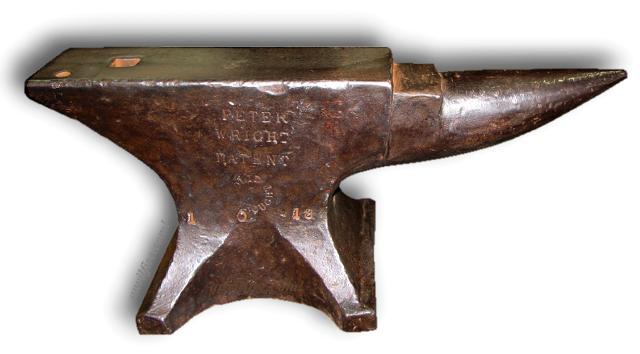
Nowadays, steel is the most used anvil material. Back in the day, anvils were made of stone slabs, iron, and bronze. The anvil material determines its performance and durability. Here are some essential considerations to keep in mind. You should know what to look out for before making a decision. However, buying an anvil requires considerable attention to some details that may make or break your blacksmithing project. Factors to Consider When Buying the AnvilĪnvils are designed with the same features. It is primarily used to punch holes into metal items. This hole is used for the same purposes as the Hardie hole. The Hardie hole helps secure other blacksmithing tools and can also be used to bend metal pieces. The Hardie hole is square and is used to hold different pieces of equipment, such as a chisel. The Hardie hole is a component found between the face surface and the heel. However, the table tends to wear out faster if used frequently. The edges of the anvil table are used as cutting points. The height of the anvil table is slightly raised than the horn and lower compared to the face. Anvil TableĪlso known as the step, an anvil table is a narrow flat part found between the anvil face and horn. Instead, the horn is primarily used to bend items. The horn is not as sturdier as the face because it is never hit with a hammer. This end resembles a horn and is meant to shape metallic items to give them a round shape. The horn is the pointed part of the anvil. The face must be designed as sturdier as possible to withstand heavy striking without deformation. The face is the most used part of an anvil. The surface is used as a sturdy platform for forging metal items. The face is a flat surface found at the top of the anvil. Here are the main components of an anvil: Anvil Face Even though anvils come in different types, they all have the same components. Part of an AnvilĪn anvil comprises different components used to serve various purposes. The most common types of anvil are stake anvil, bench anvil, forging anvil, farrier anvil, and jeweler’s anvil. As much as they are engineered simple looks, they still serve different purposes, depending on their types and sizes. Whichever type and the weight you choose should depend on your intended use.Īnvils are designed in a wide variety of shapes and sizes. The most common anvil weight should range between 20 and 500 pounds. It is primarily designed to offer a sturdy working platform against which metal components are forged. An anvil is a piece of metal used as a working surface. The two most notable blacksmithing tools are the anvil and hammer.
#ANVIL WEIGHT CRACK#
The limiting factor tends to be how large a hammer you could hit the anvil with and not crack it or dent it too badly. A 2-5# stump anvil, mounted on a 20# fencepost, buried 3-4 feet deep is a bit harder to figure. Using this rule yields the following values: 50# anvil = 2.5# max weight of hammer, 100# = 5# hammer, 200# = 10#, 500# = 25# (or 2 strikers each wielding a 12# sledge.) Apply this to an 8# sledghammer set in 100# of concrete and it becomes pretty evident what it should be able to handle. The main thought behind this rule is to avoid damage to the anvil. For general blacksmithing, the rule of thumb is that you want a mass twenty times greater than the heaviest hammer you will be using.

Another option is to get the biggest, heaviest anvil you can and set it on a stand of some sort. You could take a fencepost, bury it in a posthole, mount a stump anvil on top and do a lot of work. For example, the eight pound sledgehammer head set in the bucket o' concrete, or the stump anvil mounted in a large section of log. A very small mass of metal can serve as a very effective anvil if it is SECURELY fastened to something more massive.


 0 kommentar(er)
0 kommentar(er)
